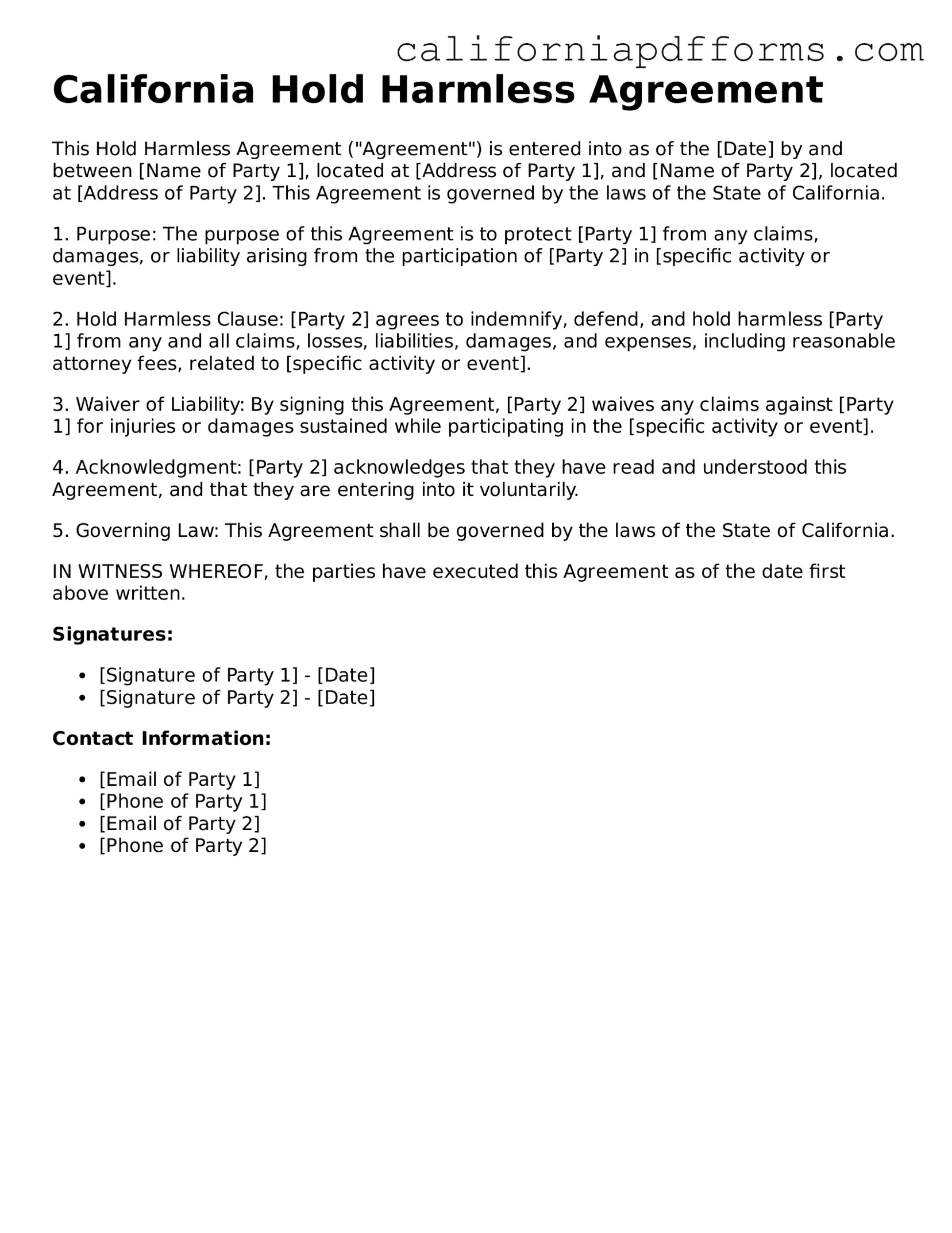Official Hold Harmless Agreement Template for the State of California
The California Hold Harmless Agreement form is a legal document designed to protect one party from liability for any damages or injuries that may occur during an activity or event. By signing this agreement, individuals or organizations agree to assume responsibility for any risks involved, thereby shielding the other party from potential legal claims. Understanding the importance of this form can help ensure safety and clarity in various situations.
To fill out the form, click the button below.
Open Your Form Online
